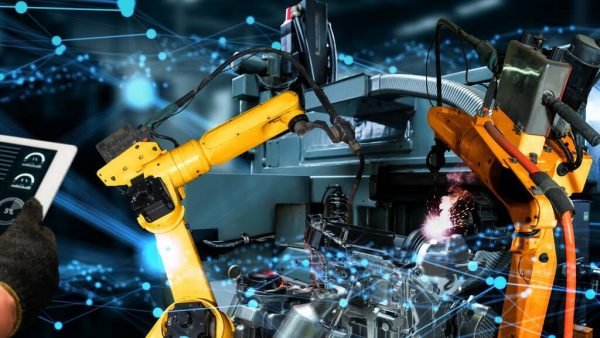Renting industrial lift equipment can be a daunting task, especially if you are new to the process. Whether you need equipment for a short-term project or are looking to avoid the costs associated with purchasing and maintaining machinery, renting can be a practical and cost-effective solution. This guide will provide you with everything you need to know about renting industrial lift equipment, ensuring that you make informed decisions and get the most out of your rental experience.
For businesses operating in bustling urban areas, options like forklift hire Sydney offer convenient and accessible solutions. Understanding the specifics of renting in such locales can help streamline your operations and ensure you have the right equipment when you need it.
Table of Contents
Understanding Your Needs
Before diving into the rental process, it’s crucial to assess your specific needs. This will help you determine the type of equipment required and ensure that you select the most suitable options.
- Project Scope and Duration
Identify the scope and duration of your project. Are you undertaking a long-term construction project or a short-term warehouse reorganization? The length of time you need the equipment will influence your rental terms and costs.
- Type of Lift Equipment
Different projects require different types of lift equipment. Here are some common types of industrial lift equipment you might need:
- Forklifts: Essential for lifting and moving heavy loads in warehouses and construction sites.
- Scissor Lifts: Ideal for accessing high places with a stable platform, commonly used in maintenance and installation projects.
- Boom Lifts: Provide extended reach for tasks that require both height and maneuverability, such as painting or window cleaning.
- Telehandlers: Versatile equipment that can lift heavy loads and place them at great heights, often used in agriculture and construction.
- Load Capacity and Height Requirements
Determine the load capacity and height requirements for your project. Ensure the equipment you choose can handle the weight of your materials and reach the necessary heights.
Choosing a Rental Provider
Selecting a reliable rental provider is critical to ensuring a smooth rental experience. Here are some factors to consider when choosing a rental provider:
- Reputation and Reviews
Research rental companies and read reviews from previous customers. A company with a solid reputation is more likely to provide reliable equipment and excellent customer service.
- Equipment Availability and Variety
Choose a provider that offers a wide range of equipment options. This ensures that you can find the specific type of lift equipment you need for your project.
- Maintenance and Safety Standards
Ensure that the rental provider maintains their equipment to high safety and operational standards. Well-maintained equipment is less likely to break down, reducing downtime and ensuring project efficiency.
- Customer Support
Good customer support is essential for addressing any issues that may arise during your rental period. Choose a provider that offers reliable customer service and support.
The Rental Process
Once you’ve chosen a rental provider, the next step is to navigate the rental process. Here’s a step-by-step guide to help you through it:
- Request a Quote
Contact the rental provider to request a quote for the equipment you need. Be sure to provide details about your project, including the type of equipment, load capacity, height requirements, and rental duration.
- Review the Contract
Carefully review the rental contract before signing. Ensure that you understand the terms and conditions, including rental rates, delivery and pick-up charges, maintenance responsibilities, and any additional fees.
- Inspect the Equipment
Before accepting delivery of the equipment, inspect it thoroughly to ensure it is in good working condition. Check for any visible damage and test the equipment to verify that it operates correctly.
- Training and Certification
Ensure that all operators of the lift equipment are properly trained and certified. Many rental providers offer training programs or can recommend certified training centers.
- Delivery and Setup
Coordinate with the rental provider for the delivery and setup of the equipment. Ensure that the site is prepared for the arrival of the equipment and that there is adequate space for its operation.
Maximizing Your Rental Experience
To get the most out of your rental experience, follow these best practices:
- Regular Maintenance and Inspection
Perform regular maintenance and inspection of the equipment during the rental period. This helps identify any issues early and ensures the equipment operates safely and efficiently.
- Proper Usage
Ensure that the equipment is used according to the manufacturer’s guidelines and the rental provider’s instructions. Avoid overloading the equipment and always follow safety protocols.
- Communication with the Rental Provider
Maintain open communication with the rental provider throughout the rental period. Report any issues or concerns immediately to avoid further complications.
- Efficient Use of Time
Plan your project schedule efficiently to make the most of the rental period. Proper planning and coordination can help you complete your tasks within the rental timeframe, avoiding additional rental costs.
Returning the Equipment
When your rental period is over, follow these steps to return the equipment smoothly:
- Clean the Equipment
Ensure the equipment is clean and free of debris before returning it. This helps avoid additional cleaning fees from the rental provider.
- Inspect for Damage
Conduct a final inspection of the equipment for any damage that may have occurred during the rental period. Report any damage to the rental provider immediately.
- Coordinate Pickup
Arrange for the rental provider to pick up the equipment. Ensure that the site is accessible and that there is adequate space for the removal of the equipment.
- Review the Final Bill
Review the final bill from the rental provider to ensure that all charges are accurate. Address any discrepancies promptly to avoid issues later.
Making the Most of Your Rental
Renting industrial lift equipment, such as forklifts, scissor lifts, and boom lifts, can be an efficient and cost-effective solution for your project needs. By understanding your requirements, choosing a reputable rental provider, and following best practices throughout the rental process, you can ensure a smooth and successful experience.
For those in urban areas like Sydney, forklift hire options provide accessible and reliable solutions tailored to your specific needs. Whether you’re tackling a short-term project or managing a long-term construction site, the right equipment and support can make all the difference.
Remember, thorough planning, regular maintenance, and clear communication with your rental provider are key to maximizing the benefits of renting industrial lift equipment. With the right approach, you can elevate your project’s success and efficiency, ensuring safe and effective operations.





